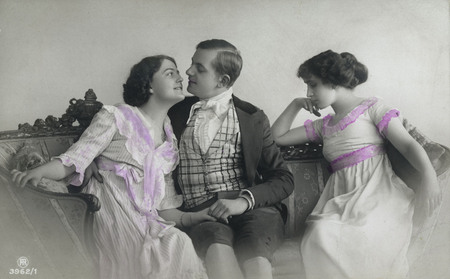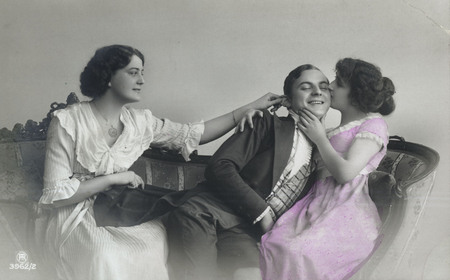You cannot forbid to live beautifully












From “You cannot forbid to live beautifully” series. Kitch in postcards and photography. The collection of the Moscow House of Photography
From “You cannot forbid to live beautifully” series. Kitch in postcards and photography. The collection of the Moscow House of Photography
From “You cannot forbid to live beautifully” series. Kitch in postcards and photography. The collection of the Moscow House of Photography
From “You cannot forbid to live beautifully” series. Kitch in postcards and photography. The collection of the Moscow House of Photography
From “You cannot forbid to live beautifully” series. Kitch in postcards and photography. The collection of the Moscow House of Photography
From “You cannot forbid to live beautifully” series. Kitch in postcards and photography. The collection of the Moscow House of Photography
From “You cannot forbid to live beautifully” series. Kitch in postcards and photography. The collection of the Moscow House of Photography
From “You cannot forbid to live beautifully” series. Kitch in postcards and photography. The collection of the Moscow House of Photography
From “You cannot forbid to live beautifully” series. Kitch in postcards and photography. The collection of the Moscow House of Photography
From “You cannot forbid to live beautifully” series. Kitch in postcards and photography. The collection of the Moscow House of Photography
From “You cannot forbid to live beautifully” series. Kitch in postcards and photography. The collection of the Moscow House of Photography
From “You cannot forbid to live beautifully” series. Kitch in postcards and photography. The collection of the Moscow House of Photography
Moscow, 18.03.2005—10.04.2005
exhibition is over
Moscow Museum of Modern Art
Petrovka St., 25
Share with friends
Kitch in postcards and photography
The collection of the Moscow House of Photography
For the press
Children are the flowers of life. Possibly in the past this phrase might have sounded as an accurate poetic image. But today it strikes us as a banality.
How does a banality come into existence? By constant repetition; that is, any image that appears too often becomes something commonplace.
A kitsch statement is something tautological by its very nature. It is a banality multiplied by another banality. An example would be the poetic lines «Flowers will fade and love will die and never be born again», written on a photo of a fat lady alongside a moustached bon-vivant (his hand, holding a bouquet, lies on her waist). This concoction of triteness becomes especially tasty when some ruche is added.
Ruche is a decorative element with absolutely no functional purpose, which has an ability to attract the consumer. It endows similarly looking images with an impression of diversity. The dress of the fat lady is carelessly painted with pink. It is this spot of colour that primarily catches our attention when we glance at the post-card.
The technical ingenuity of the publishers is truly magnificent. These are only several examples of the «ruche» which was used to tempt the potential buyer before the revolution.
Hand-coloured photograph — the easiest and most widespread way to «enliven» black and white shots. Even though it could have been the easiest only when hand-made things were cheaper than those produced by machines. To an inexperienced eye the paint on these postcards might seem printed, but this impression is false (One can easily check it out by applying a damp finger to the surface, but please don’t do it in a museum. Hand-coloured prints are available in many Moscow antique shops).
Embossing. It helps to put in relief certain details of the postcard, which in this way are raised above the horizontal surface of the print. Thus the embossed areas instantly attract the attention of the spectator. The effect is further strengthened by a particular colouring of these details. For example, embossing combined with gold paint creates an impression of festive magnificence that is expected from a Christmas postcard — the wings of an angel and the star of Bethlehem with its rays are «gilded».
Spangles. This is another popular technique for attracting attention. They are glued right onto the postcard, to imitate, for example, snow lying on a tree or to decorate the outlines of garments.
Embroidery. It is much rarer. The postcard is made out of two layers of cardboard: the back one is used for writing, while the front one is embroidered with strings of different colour, which is done with the help of a sewing-machine. This technique is applied for the model’s clothes. The fastening bow on a shoulder strap of a dress can be made separately, as well as some flowers decorating the hair.
Artificial eyes. Another original way to «enliven» a photo. They are glued between two layers of paper in the place where the photo-image of the eyes should be.
There are two unique exhibits from the Golosovski collection — two photographs with natural hair (1911). They are glued to the heads of the models. In one case in order to strengthen the effect a dried plant is attached to the «wig». On the other card, belonging to the same series, the head of the sitter is decorated with a red «cap» — a velvet triangle with real feathers (painted in blue and yellow). Today these photos produce a powerful smell of decay.
This kind of photography is neither a documentary evidence, nor a work of art, because the object of kitsch cards is different — they create a fairy-tale impression with its infantile feelings of surprise and excitement. The gold relief of the angel’s wings conveys the viewer from the «everyday life» of photography to the «magic» of the postcard. The sheepdog’s artificial red eyes and a toy bow made from a thin ribbon instantly endow the image of the beast with an additional dimension. This card has the qualities which are so greatly appreciated by small children: it scares you (the eyes glimmer with red if the card is brought close to a lamp), but at the same time the very sense of fright attracts the kid. The excessiveness may seem unpleasant, like in the case of the superfluously realistic hair on the postcards we have mentioned. But in a fairy-tale one can also find repulsive details, which nevertheless play their role in the whole construction.
A photo post-card is not a photograph, it is something else. The «dead» (i.e. too realistic) photo image is opposed by «live» (i.e. magical) ruche. The object of the latter is to lure the viewer into a sort of game, to make him stop, even if only for a while (with the hope that he will buy the product). Photography by itself does not have the necessary means to do it. Kitsch is made for grown children, for Chekov’s Lopakhin with his rags-to-riches biography. The popularity of photo post-cards in Russia is connected with the beginning of the epoch of mass literacy.
Mikhail Sidlin


